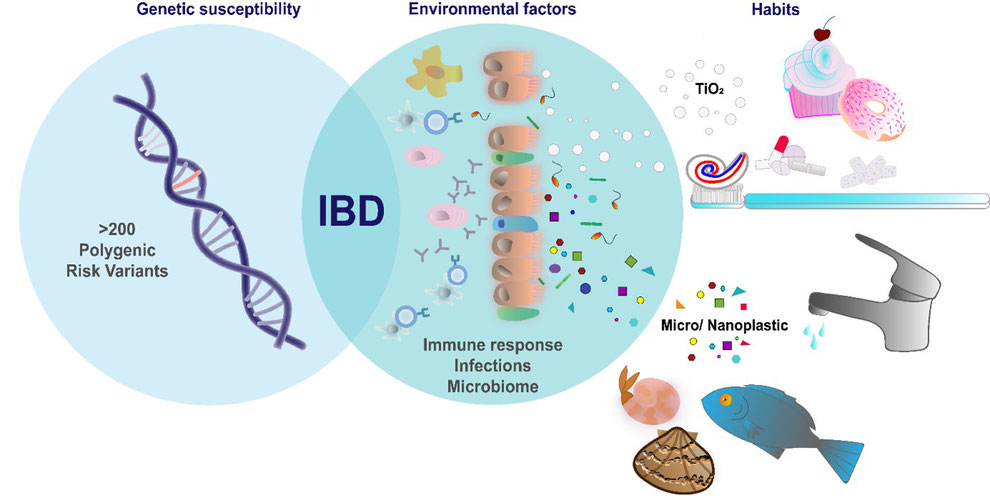The impact of Nano- and Microparticles on intestinal homeostasis
IBD is a multifactorial disease, driven by an interplay of environmental factors and genetic susceptibility. In 2016 we identified food-grade Titanium dioxide (TiO2) nanoparticles to be an underrated IBD risk factor. TiO2 nanoparticles, also referred to as E171, are widely used as a whitening agent in comestible goods and personal care products and therefore omnipresent in the western diet and everyone´s daily life. For more than five decades TiO2 has been added to toothpaste, coffee creamer, candy, chewing gums and many more, as well as pharmaceuticals in order to optimize visual appearance and to meet the consumers requirements. A polymorphism in the gene locus encoding protein-tyrosine phosphatase non-receptor type 22 (PTPN22) is highly associated with chronic inflammatory disorders but protects from Crohn´s disease. Despite its protective character, individuals carrying the auto-immunity-associated PTPN22 variant develop IBD. Increased TNFα and IL-1β expression was found to correlate with TiO2 levels in patients heterozygous for the PTPN22 SNP. We are aiming to investigate the interplay of the R620W variant and TiO2 ingestion which might promote IBD onset in these patients.
Besides food-grade TiO2 nanoparticles, another highly relevant environmental factor that significantly increased in the past decades are plastic particles. The increasing abundance of fine plastic spheres in the human diet is raising public awareness and experts are concerned about the presence of microplastic particles in basic food and drinks. Microplastic has been detected in human feces and small plastic particles have been evidenced in all human organs. The average human being consumes around 5 grams of plastic every week – the equivalent of a credit card. The ingestion of plastic particles might particularly impact patients suffering from intestinal diseases, since epithelial lesions might enable increased penetration of plastic particles and exceeding immune response. Since the uptake of small plastic particles is increasing in the human diet, we are investigating the impact of small plastic particles on IBD pathogenesis.




